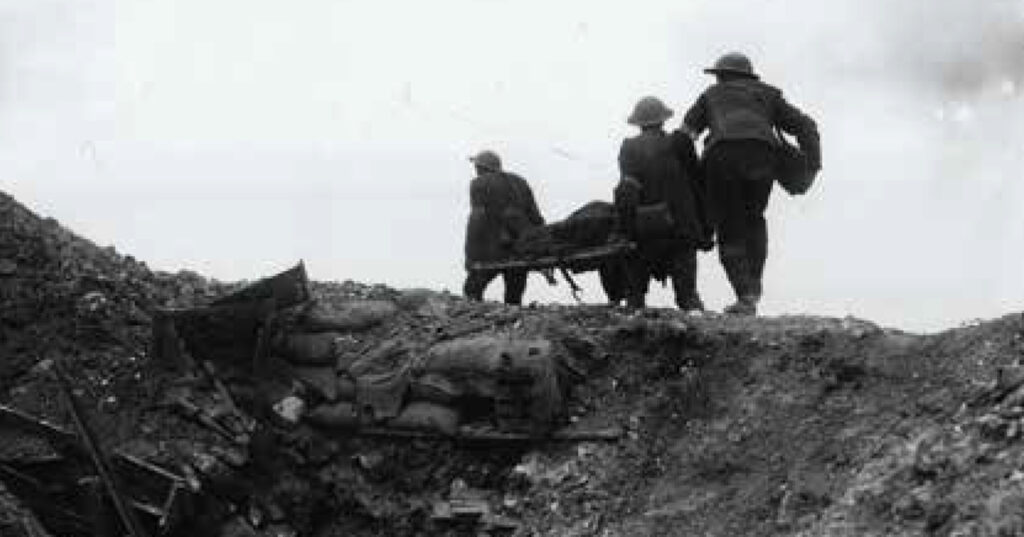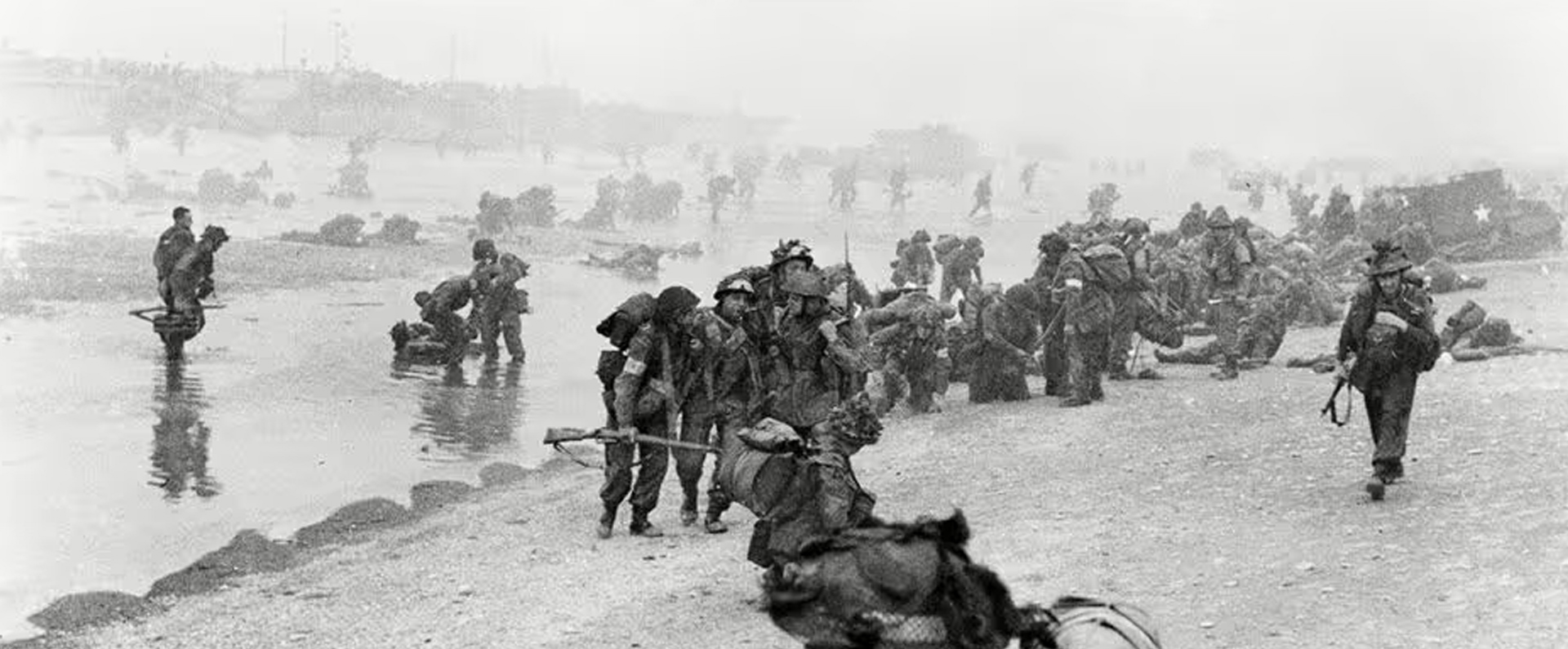
Published in Britain at War in November 2016.
Hon Lieutenant Colonel Tom Edwin Adlam VC: skill
Tom Edwin Edlam was born in Salisbury, Wiltshire, on 21 October 1893. He was the son of John Adlam, a wheelwright and coachbuilder, and his wife Evangeline (née Phillips). One of six children, Tom Adlam attended St Martin’s School in Salisbury and, later, nearby Bishop’s Wordsworth’s School. In 1911 and still only seventeen, he trained at the Pupil Teachers’ Centre in Salisbury before attending another teaching course at Winchester Training College, Hampshire, from 1912-4. Adlam, a keen footballer who played for Salisbury City, started work at Brook Street Council School in Basingstoke, Hampshire, before the Great War interrupted his teaching career.
In September 1912, Adlam had enlisted into the 4th Hampshire Regiment (Territorial Force), where he earned a reputation for his bomb throwing skills. On 6 November 1914, he was commissioned as a second lieutenant into the 7th Bedfordshire Regiment. In 1916, he was appointed an instructor to No 2 Officer Cadet Battalion, Cambridge, but he also had spells on the Western Front. On 21 June 1916, Adlam married Ivy Mace, whom he had met while teaching, at St Mary’s Church, Farnborough, Hampshire, and the couple eventually went on to have two sons and two daughters.
Adlam was serving with the 7th Bedfordshire Regiment in France when General Gough attacked, on 26 September 1916, the line running west from Courcelette towards Thiepval. In what became know as the Battle of Thiepval Ridge, an Allied headquarters was established at Thiepval Château on the afternoon of the 26th. However, as night fell, the area to the north-west of Thiepval remained in enemy hands. At 5.45am on 27 September, the 8th Bedfordshire Regiment and 1/5th West Yorks were tasked with attacking and capturing this well-defended area.
Adlam’s bravery that morning, when aged just twenty-two, led to him being awarded the VC when his citation, published on 25 November 1916, stated:
‘For most conspicuous bravery during operations.
‘A portion of a village which had defied capture on the previous day had to be captured at all costs to permit subsequent operations to develop.
‘This minor operation came under very heavy machine gun and rifle fire.
‘Second Lieutenant Adlam realising that time was all important, rushed from shell hole to shell hole under heavy fire collecting men for a sudden rush, and for this purpose also collected many enemy grenades. At this stage he was wounded in the leg, but nevertheless he was able to outthrow the enemy and then seizing his opportunity, and in spite of his wound, he led a rush, captured the position and killed the occupants. Throughout the day he continued to lead his men in bombing attacks.
‘On the following day he again displayed courage of the highest order, and though again wounded and unable to throw bombs, he continued to lead his men.
‘His magnificent example and valour, coupled with the skilful handling of the situation, produced far-reaching results.’
Adlam’s skilful ability to throw bombs, for some forty yards using either hand, had undoubtedly helped him and his comrades to win the day. He had even removed some of his equipment so that he could throw the bombs even further. At school, Adlam had been known to throw a cricket ball for 100 yards and, five years on, he had clearly lost none of his sporting prowess.
Adlam recovered from his wounds, including a serious injury to his leg, and was appointed to the Army Educational Corps (AEC) and he continued with his previous duties as an instructor. He received his VC from George V at an investiture in Buckingham Palace on 2 December 1916. In fact, Adlam’s mother had died earlier in September of 1916 but, instead of taking compassionate leave, he remained in France. If he had returned to Britain, Adlam would not have performed the gallantry for which he was later awarded the VC.
In a later interview for the Imperial War Museum, Adlam recalled how he told his men during his VC action: ‘Get one [a bomb] in your hand, pull out the pin. Now hold it tight. As soon as I yell “Charge”, stand up, run two or three yards, [and] throw your bomb. And I think we’ll get into that [enemy] trench…I went gayly along, throwing bombs.’
On 1 July 1917, Adlam was promoted to lieutenant and, on 15 November 1919, more than a year after the end of the Great War, he was demobbed in the rank of honorary captain. However, Adlam re-enlisted in the AEC in 1920 and served in Ireland prior to partition.
In the years after the Great War, he became known simply as ‘the Salisbury VC’ and he was awarded a gold watch by the Mayor of the city, as well as being invited to unveil Salisbury’s war memorial.
Adlam always considered himself to be primarily a teacher rather than a soldier and in 1923, after retiring to the Reserve of Officers, he taught at Sandys Church of England School, Bedfordshire, for three years. Next, he became headmaster of Blackmoor Church of England School, Hampshire, where his wife also taught.
After the outbreak of the Second World War in 1939, Adlam was recalled to the Royal Engineers as a staff captain. He worked as an embarkation commandant at Dover, Kent, and Tilbury, Essex, and also in Glasgow. Adlam was demobbed in April 1946 with the honorary rank of lieutenant colonel. After the war, he returned to his senior role at Blackmoor but, when the school closed, he bought the building and turned it into a family home. After a spell working at Blackmoor Estate Fruit Farm and Nursery, he retired in 1952.
Adlam died at Hayling Island, Hampshire, on 28 May 1978, aged eighty-one, and he is buried at Blackmoor Church. There is a tablet and banner in his honour at Bishop Wordsworth’s School, Salisbury, and a portrait of him at the city’s Guildhall. Adlam’s VC and other medals are on public display in the Grand Jury Room at the city’s Guildhall.
Download a PDF of the original Britain at War article
For more information, visit:
LordAshcroftOnBravery.com


